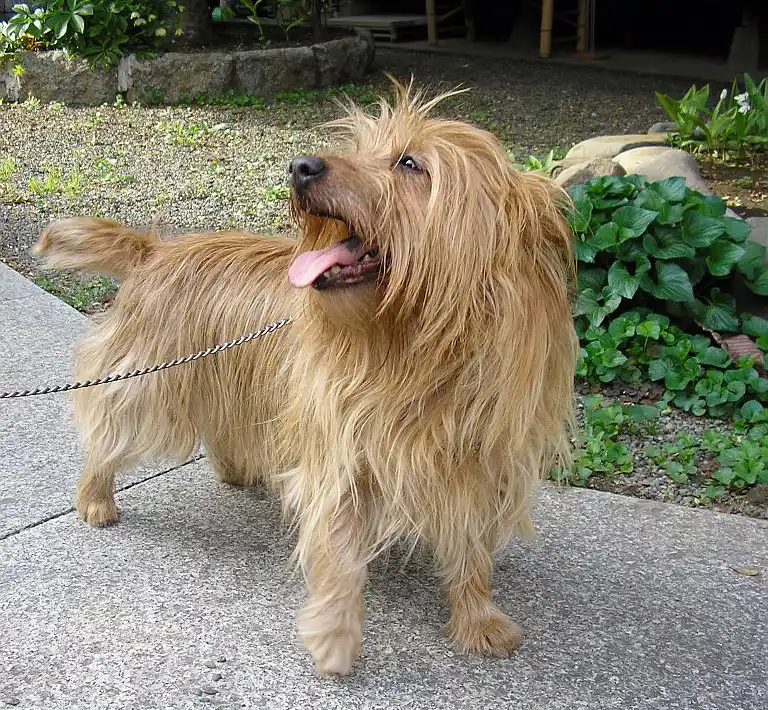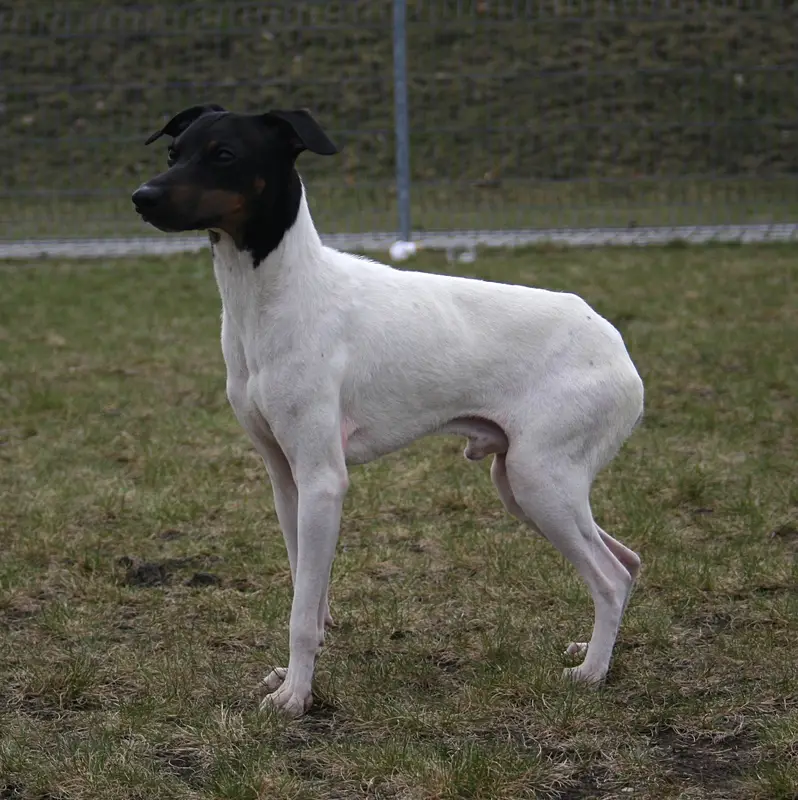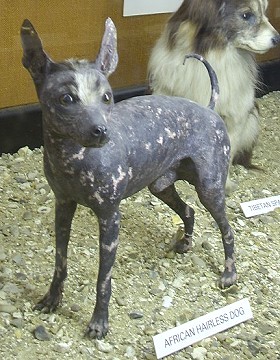Chilean Terrier
The Chilean Terrier, also known as the Ratonero, is a small, intelligent breed with a rich history in Chile. Adaptable and loyal, they excel as vermin hunters and loving companions.
Overview
🐕Breed Overview
✨Key Traits
💡What Makes Chilean Terrier Special
One of the standout traits of the Chilean Terrier is its tenacity, particularly when it comes to hunting vermin. This breed is known for its strong prey drive and determination, making it an effective hunter.
Additionally, their adaptability allows them to thrive in different living situations, whether in a rural farm setting or a bustling city apartment. Their intelligence and eagerness to please make them relatively easy to train, although they may require patience and consistency from their owners.
Overall, their unique blend of loyalty, intelligence, and adaptability makes them a wonderful addition to any active family.
The Chilean Terrier, also known as the Ratonero or Chilean Fox Terrier, is a small yet spirited breed that has captured the hearts of dog lovers in Chile and beyond. Originating from the late 19th century, this breed was developed through the crossbreeding of European Fox Terriers and native Chilean dogs, resulting in a tenacious hunter and loyal companion. With a height ranging from 11 to 15 inches and a weight between 9 to 17 pounds, the Chilean Terrier is perfectly sized for both rural and urban living.
Historically, these dogs were valued for their ability to control vermin populations, making them essential on farms and in cities. Their adaptability allowed them to thrive in various environments, and they quickly became beloved family pets. The breed's temperament is characterized by its intelligence, loyalty, and affectionate nature, making them excellent companions for active families.
Chilean Terriers are known for their distinctive appearance, featuring a short coat primarily white with black and brown markings. Their ears are set high and lean forward, giving them an alert expression. They are generally easy to train, but early socialization is crucial to mitigate their wariness towards strangers and other dogs.
In terms of exercise, these dogs require regular physical activity to maintain their health and happiness. Daily walks, playtime, and mental stimulation through games and training are essential. Grooming needs are minimal, with occasional brushing to keep their coat clean and healthy.
Overall, the Chilean Terrier is a versatile breed that excels as a vermin hunter, watchdog, and loving companion. Their rich history and cultural significance in Chile make them a unique addition to any home, and their adaptability ensures they can thrive in various living situations. Whether in the countryside or the city, the Chilean Terrier is a delightful companion that brings joy and energy to any household.
🎉Fun Facts
Chilean Terriers are known for their adaptability to both rural and urban environments, making them versatile companions.
The Chilean Terrier is often referred to as 'Ratonero,' meaning 'rat hunter' in Spanish.
Washington, the dog from the comic 'Condorito,' is a famous representation of the breed in Chile.
Breed Characteristics
Family & Friends
Good Behavior
Get Up & Go
Household Harmony
Temperament & Personality
✨Key Traits
🐕Core Temperament
The temperament of the Chilean Terrier is characterized by its loyalty and alertness. They are known to be affectionate with their families, often seeking companionship and attention.
While they can be reserved around strangers, proper socialization can help them become more comfortable in new situations. Their energetic nature means they enjoy playtime and activities, making them suitable for active families.
However, their strong prey drive may lead them to chase smaller animals, so supervision is recommended when interacting with other pets.
💫Personality Profile
Chilean Terriers are known for their lively and affectionate nature. They form strong bonds with their families and are often described as loyal companions.
Their intelligence makes them quick learners, but they can also be independent thinkers, requiring consistent training and socialization. While they may be wary of strangers, they are generally friendly with their families and can be playful with children.
Their energetic disposition means they thrive in active households where they can participate in various activities.
🔊Vocal Tendencies
Chilean Terriers have a moderate barking tendency, often alerting their owners to new sounds or visitors. While they may bark to communicate or express excitement, excessive barking can be managed through training and socialization.
Their vocalizations can vary from playful barks during playtime to more serious barks when they perceive a threat. Understanding their vocal behavior is essential for managing their noise levels effectively.
Affection & Social Traits
Energy & Activity
Communication Style
Care Requirements
🏃♂️Exercise Requirements
Daily Exercise
The Chilean Terrier is an active breed that requires regular exercise to maintain its physical and mental well-being. Ideally, they should engage in at least 30 to 60 minutes of exercise daily.
This can include brisk walks, playtime in a secure yard, or engaging in activities like fetch or agility training. Puppies may require shorter bursts of playtime, while older dogs may need gentler exercise to accommodate their energy levels.
Regular exercise helps prevent obesity, supports cardiovascular health, and reduces behavioral issues stemming from pent-up energy. Insufficient exercise can lead to destructive behaviors, anxiety, and weight gain, making it crucial for owners to establish a consistent routine.
Preferred Activities
🏠Living & Adaptability
Space Requirements
Chilean Terriers adapt well to various living environments, including apartments and houses with small yards. However, they thrive best in homes with access to outdoor spaces where they can run and play.
For apartment dwellers, it's essential to provide regular outings to parks or open areas to ensure they receive adequate exercise and mental stimulation. Their small size allows them to fit comfortably in smaller spaces, but owners should be mindful of their energy levels and provide opportunities for physical activity to prevent boredom and anxiety.
Climate Preference
🍲Feeding Guide
Schedule
Food Types
Portion Size
Special Nutritional Needs
Chilean Terriers require a balanced diet rich in protein to support their active lifestyle. It's essential to choose high-quality dog food that meets their specific needs.
Some dogs may have food sensitivities, so monitoring their reactions to different foods is crucial. Regular veterinary check-ups can help identify any dietary adjustments needed as they age.
✨Grooming Requirements
Grooming Overview
The Chilean Terrier has a short coat that requires minimal grooming. Regular brushing, about once a week, is sufficient to remove loose hair and keep their coat healthy.
Bathing should be done as needed, typically every few months or when they become particularly dirty. Their ears should be checked regularly for dirt and wax buildup, and nails should be trimmed every few weeks to prevent overgrowth.
Overall, their grooming needs are low, making them an easy breed to care for.
Care Schedule
Brush weekly, bathe as needed, trim nails every 2-3 weeks.
Health Profile
⚕️Health Care
Regular health care is vital for the Chilean Terrier's longevity. Routine veterinary check-ups, vaccinations, and preventive treatments can help detect and address health issues early.
Owners should also be proactive in monitoring their dog's health, including dental care, weight management, and exercise needs. Establishing a consistent health care routine can significantly enhance the quality of life for these dogs throughout their various life stages.
Health Issues Overview
⏳Average Lifespan
Genetic Factors
Genetics significantly impact the Chilean Terrier's lifespan, with hereditary health issues potentially affecting their overall health. Responsible breeding practices that prioritize genetic diversity can help reduce the risk of inherited conditions.
Prospective owners should seek reputable breeders who conduct health screenings and provide transparency about the breed's genetic background. Understanding the genetic predispositions of the breed can help owners make informed decisions regarding their dog's health and care.
Living Conditions
The Chilean Terrier's lifespan can be influenced by various environmental factors. Dogs living in active households with ample opportunities for exercise and mental stimulation tend to live longer, healthier lives.
Access to outdoor spaces for play and exploration is beneficial, as is a stable and loving home environment. Additionally, exposure to extreme weather conditions can affect their health, so providing shelter and comfort during harsh climates is essential.
Regular veterinary care and a balanced diet also play crucial roles in promoting longevity.
🏥Common Health Issues
Patellar Luxation
Warning Signs
🔬Diagnosis
Veterinarians typically diagnose this condition through physical examination and observation of the dog's movement.
💊Treatment
Surgical intervention may be necessary in severe cases, along with physical therapy.
📝Management Tips
Maintain a healthy weight and provide joint supplements as recommended by a veterinarian. Regular vet check-ups can help monitor joint health.
Dental Disease
Warning Signs
🔬Diagnosis
Diagnosis is made through dental examinations and X-rays.
💊Treatment
Professional dental cleaning and possible tooth extraction.
📝Management Tips
Regular dental cleanings and at-home dental care can help prevent this issue.
Obesity
Warning Signs
🔬Diagnosis
Diagnosis is made through physical examination and weight assessment.
💊Treatment
Weight management through diet and exercise.
📝Management Tips
Maintain a balanced diet and regular exercise routine to prevent obesity.
🛡️Preventive Care
🔬Hip Evaluation
This test assesses the dog's hip joints for any abnormalities that could lead to mobility issues.
📅 Recommended annually for adult dogs, especially those with a family history of hip problems.
🔬Patellar Luxation Assessment
This test evaluates the dog's patellar stability to detect any luxation issues.
📅 Recommended annually for adult dogs and during puppy vaccinations.
🔬Dental Examination
This test checks for common dental issues that can lead to serious health problems if left untreated.
📅 Recommended every 6 months for all ages.
Training
🧠Intelligence & Trainability
💪Work Drive
Chilean Terriers possess a strong work drive, stemming from their historical role as hunters. They thrive when given tasks or jobs to do, whether it's participating in agility training, engaging in scent work, or simply accompanying their owners on outdoor adventures.
Providing them with mental challenges and physical activities is essential to keep them happy and fulfilled. Without sufficient engagement, they may become bored and exhibit undesirable behaviors, such as digging or excessive barking.
⚠️Training Considerations
Chilean Terriers may exhibit some behavioral challenges, such as barking and wariness towards strangers and other dogs. These tendencies can stem from their protective instincts and territorial nature.
To mitigate these challenges, early socialization is crucial. Exposing them to various environments, people, and other animals from a young age can help them develop a more balanced temperament.
Consistent training using positive reinforcement methods can also address excessive barking and help them learn appropriate behaviors in different situations.
📝Training Tips
Training a Chilean Terrier can be a rewarding experience, as they are intelligent and eager to please. Utilizing positive reinforcement techniques, such as treats and praise, can enhance their learning process.
Short, engaging training sessions are recommended to maintain their interest. Incorporating play into training can also be beneficial, as it aligns with their energetic nature.
Consistency is key, and owners should establish clear commands and boundaries to ensure effective training outcomes. Regular mental stimulation through puzzle toys and interactive games can further enhance their problem-solving skills.
History & Heritage
📜Origin Story
The Chilean Terrier's origin can be traced back to the arrival of Spanish colonizers in the 18th century, who brought with them smooth-haired Fox Terriers. These dogs were bred with local canines, creating a unique breed that thrived in the diverse climates of Chile.
Initially utilized for hunting small rodents on farms, the Chilean Terrier quickly became a beloved companion for both peasants and landowners. As urbanization increased in the late 19th century, these dogs adapted to city life, continuing their role as effective vermin hunters.
The breed's journey reflects the broader narrative of Chilean history, showcasing its resilience and adaptability through changing social landscapes.
⏳Development History
The Chilean Terrier's development began in the late 19th century, stemming from the crossbreeding of European Fox Terriers with native Chilean dogs. This blend resulted in a small, tenacious breed well-suited for hunting vermin.
The breed's characteristics were shaped by its environment, as it adapted to both rural and urban settings. Despite facing challenges in gaining recognition, the Chilean Terrier has persisted and is now included in various canine organizations, reflecting its enduring legacy and importance in Chilean society.
🛡️Purpose & Historical Role
Historically, the Chilean Terrier was developed primarily for vermin control, serving as a skilled hunter of mice and small rodents on farms and in urban settings. Its tenacity and agility made it an invaluable asset to farmers, who relied on the breed to protect their crops and livestock from pests.
Over time, the Chilean Terrier also evolved into a loyal companion, known for its affectionate nature and ability to bond with families. Today, while it still retains its hunting instincts, the breed is also cherished as a family pet and watchdog.
🏺Cultural Significance
The Chilean Terrier holds a special place in Chilean culture as the first recognized breed from the country. Its historical significance dates back to the colonial era when European immigrants brought their terriers to South America.
Over time, these dogs adapted to the local environment and became integral to rural life, serving as vermin hunters and loyal companions. The breed's presence in popular culture is exemplified by Washington, the beloved dog from the comic 'Condorito,' which has further solidified its status as a national symbol.
Today, the Chilean Terrier is celebrated for its versatility and adaptability, making it a cherished pet across various social classes in Chile.
Conservation Status
This breed is well-established with healthy population numbers.









